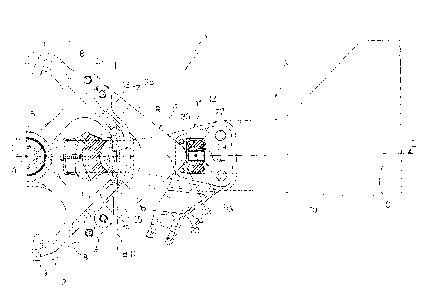Some of the information on this Web page has been provided by external sources. The Government of Canada is not responsible for the accuracy, reliability or currency of the information supplied by external sources. Users wishing to rely upon this information should consult directly with the source of the information. Content provided by external sources is not subject to official languages, privacy and accessibility requirements.
Any discrepancies in the text and image of the Claims and Abstract are due to differing posting times. Text of the Claims and Abstract are posted:
| (12) Patent: | (11) CA 2520778 |
|---|---|
| (54) English Title: | HELICOPTER ROTOR |
| (54) French Title: | ROTOR D'HELICOPTERE |
| Status: | Deemed Expired |
| (51) International Patent Classification (IPC): |
|
|---|---|
| (72) Inventors : |
|
| (73) Owners : |
|
| (71) Applicants : |
|
| (74) Agent: | SMART & BIGGAR LP |
| (74) Associate agent: | |
| (45) Issued: | 2013-04-02 |
| (22) Filed Date: | 2005-09-23 |
| (41) Open to Public Inspection: | 2006-03-28 |
| Examination requested: | 2010-07-20 |
| Availability of licence: | N/A |
| Dedicated to the Public: | N/A |
| (25) Language of filing: | English |
| Patent Cooperation Treaty (PCT): | No |
|---|
| (30) Application Priority Data: | ||||||
|---|---|---|---|---|---|---|
|
There is described a rotor for a helicopter, having a hub rotating about a first axis; a number of blades projecting from the hub in respective longitudinal directions lying in a plane crosswise to the first axis, and each connected to the hub so as to be movable at least about a second axis crosswise to the first axis and to the relative longitudinal direction; and a number of damping devices for damping vibration of the helicopter, and each interposed between a respective blade, and the hub; each damping device has a plate member fixed, on one side, to the hub, connected, on the opposite side, to the relative blade by elastic means, and flexible, during movement of the blade, about a third axis coaxial with the second axis.
Un rotor d'hélicoptère est décrit ayant un moyeu en rotation par rapport à un premier axe, un nombre de pales se projetant du moyeu dans les directions longitudinales respectives reposant dans un plan perpendiculaire au premier axe et chacune étant reliée au moyeu de sorte à être mobile dans au moins un deuxième axe perpendiculaire au premier axe et à la direction longitudinale relative et un nombre de dispositifs d'atténuation pour atténuer la vibration de l'hélicoptère, et chacun étant interposé entre une pale respective et le moyeu; chaque dispositif d'atténuation a un élément de plaque fixé, sur un côté, au moyeu, relié, sur le côté opposé, à la pale relative par des moyens élastiques et souples, pendant le mouvement de la pale, autour d'un troisième axe coaxial par rapport au deuxième axe.
Note: Claims are shown in the official language in which they were submitted.
Note: Descriptions are shown in the official language in which they were submitted.

2024-08-01:As part of the Next Generation Patents (NGP) transition, the Canadian Patents Database (CPD) now contains a more detailed Event History, which replicates the Event Log of our new back-office solution.
Please note that "Inactive:" events refers to events no longer in use in our new back-office solution.
For a clearer understanding of the status of the application/patent presented on this page, the site Disclaimer , as well as the definitions for Patent , Event History , Maintenance Fee and Payment History should be consulted.
| Description | Date |
|---|---|
| Letter Sent | 2024-03-25 |
| Letter Sent | 2023-09-25 |
| Inactive: Correspondence - Transfer | 2020-08-21 |
| Common Representative Appointed | 2019-10-30 |
| Common Representative Appointed | 2019-10-30 |
| Letter Sent | 2019-10-23 |
| Inactive: Multiple transfers | 2019-10-09 |
| Change of Address or Method of Correspondence Request Received | 2018-01-12 |
| Inactive: Office letter | 2016-03-03 |
| Inactive: Correspondence - MF | 2016-01-11 |
| Grant by Issuance | 2013-04-02 |
| Inactive: Cover page published | 2013-04-01 |
| Pre-grant | 2013-01-17 |
| Inactive: Final fee received | 2013-01-17 |
| Notice of Allowance is Issued | 2012-10-15 |
| Letter Sent | 2012-10-15 |
| Notice of Allowance is Issued | 2012-10-15 |
| Inactive: Approved for allowance (AFA) | 2012-09-28 |
| Amendment Received - Voluntary Amendment | 2012-03-28 |
| Inactive: S.30(2) Rules - Examiner requisition | 2011-12-02 |
| Letter Sent | 2010-08-04 |
| Request for Examination Requirements Determined Compliant | 2010-07-20 |
| All Requirements for Examination Determined Compliant | 2010-07-20 |
| Request for Examination Received | 2010-07-20 |
| Letter Sent | 2006-11-08 |
| Inactive: Single transfer | 2006-09-20 |
| Inactive: Cover page published | 2006-03-30 |
| Inactive: IPC assigned | 2006-03-29 |
| Inactive: First IPC assigned | 2006-03-29 |
| Inactive: IPC assigned | 2006-03-29 |
| Application Published (Open to Public Inspection) | 2006-03-28 |
| Inactive: Courtesy letter - Evidence | 2005-11-08 |
| Inactive: Filing certificate - No RFE (English) | 2005-11-04 |
| Filing Requirements Determined Compliant | 2005-11-04 |
| Application Received - Regular National | 2005-11-04 |
There is no abandonment history.
The last payment was received on 2012-09-07
Note : If the full payment has not been received on or before the date indicated, a further fee may be required which may be one of the following
Please refer to the CIPO Patent Fees web page to see all current fee amounts.
Note: Records showing the ownership history in alphabetical order.
| Current Owners on Record |
|---|
| LEONARDO S.P.A. |
| Past Owners on Record |
|---|
| SANTINO PANCOTTI |